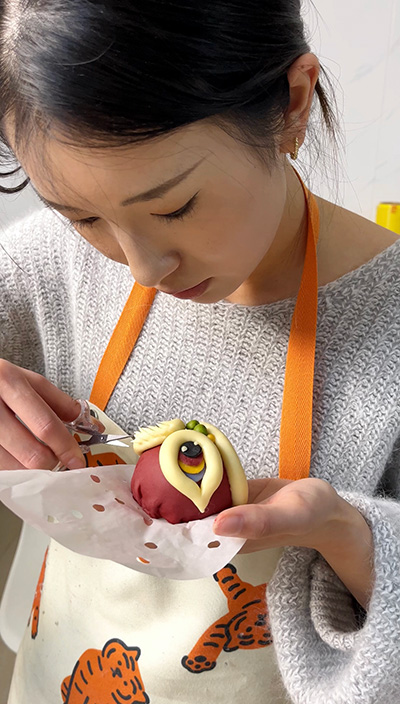Opting for a career of good taste
Graduate makes traditional buns in an innovative way that keeps the customers satisfied, Yang Feiyue reports.
By Yang Feiyue | CHINA DAILY | Updated: 2022-12-21 07:54

Zang Chaiyuan has recently been working deep into the night as people are lined up for her steamed buns. The 25-year-old from Yantai, East China's Shandong province, has managed to turn flour into a gold mine through her ingenious maneuvers that breathe modern elements into "Jiaodong huabobo", a popular traditional food dating back more than 300 years, especially in the province's Jiaodong peninsula.
Huabobo refers to a flower-shaped steamed bun, which has been a treat at local folk activities, such as celebrations and festivals.
It was listed as a provincial intangible cultural heritage in Shandong in 2009.
The buns are shaped by Zang's adept hands. These shapes range from cute rabbits dressed in lion dance costumes to treasure bowls and lucky bags, among others.
They have made her an online sensation and ignited a media frenzy that has earned her approximately 100 million views on multiple platforms, including Douyin and Sina Weibo.
"It's the details that matter," Zang says about the popularity of her buns.
As demonstrated in one of her videos, she took pains to create a red-flour layer to dress up her rabbit and meticulously sculpt its facial features and fur.
"I also made a point of highlighting the cuffs," she says.
As the flour swells in the steamer, the rabbit seems to take on a life of its own.
The corners of its mouth turn upward, and its skin springs back perfectly when Zang's fingers press it.
Many of her followers have made purchase inquiries for her buns and commented that they are too cute to be eaten.
"The New Year holiday is coming, and we're snowed under with orders," Zang says.
Zang found her opportunity when she noticed that most of huabobo shops were running the old-fashioned way. "Their customers are basically people in the neighborhood," Zang says.
"Although the buns taste good, the sales channels are quite limited," she says, adding that the buns can be preserved for more than two months in a freezer, which makes long-distance sales possible.
That was when she figured if she could move the intangible cultural heritage online to expand its sales and boost its popularity.
However, it was not plain sailing at the beginning.
Her parents initially opposed her decision to open a huabobo shop.
"They believed young people should find a steady job, like being a civil servant or a teacher," Zang recalls, adding that they also thought bun making was better for more elderly women.
However, she stood her ground.
























